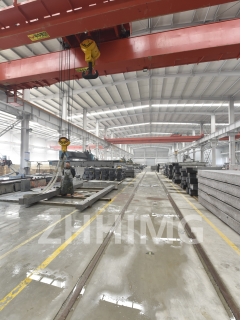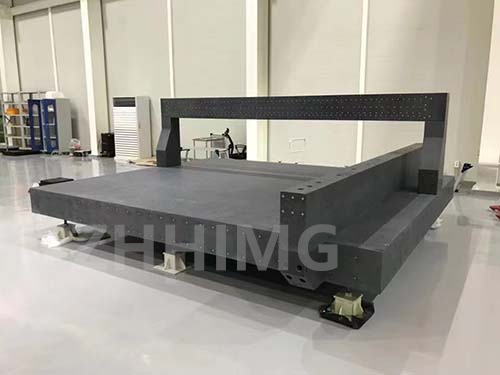In the fields of high-end manufacturing and precision engineering, the service life of equipment components is directly related to production stability and operating costs. ZHHIMG granite components, with an ultra-high density of 3.1g/cm³ and an outstanding elastic modulus of 50GPa, have broken through the limits of traditional materials, achieving a service life of over 30 years and becoming the "longevity benchmark" in industrial applications. The material science principles behind it reveal the deep connection between performance and durability.
1. 3.1g/cm³ density: Dense structure builds a durable foundation
The high density of ZHHIMG granite components stems from their unique mineral composition and geological formation process. Granite is mainly composed of mineral crystals such as quartz, feldspar and mica closely combined. Under the geological environment of high temperature and high pressure, these minerals have crystallized and compacted for hundreds of millions of years, forming a nearly pore-free dense structure (porosity < 0.1%). This compactness endows components with three core advantages:
Outstanding wear resistance: High density means that the atoms on the material surface are closely arranged, making it less prone to wear and scratches during long-term friction or mechanical contact. For instance, in the application of precision machine tool guide rails, ZHHIMG granite components can withstand over a million reciprocating movements, with a surface accuracy loss of less than 0.01μm, far exceeding that of traditional materials such as cast iron.

Enhanced corrosion resistance: The dense structure effectively isolates the invasion of external chemical substances. Whether it is acid and alkali reagents, industrial oil stains or humid air, the chemical stability of ZHHIMG granite components is not affected. Its pH tolerance range is 1-14, and it can be used for a long time in extreme environments without corrosion.
Enhanced dimensional stability: High-density materials have low thermal conductivity, making it difficult for heat to disperse rapidly within the component, thereby reducing thermal stress concentration caused by temperature changes. Combined with its thermal expansion coefficient as low as (4-8) ×10⁻⁶/℃, the dimensional changes of ZHHIMG granite components are always controlled at the micrometer level within the temperature range of -40 ℃ to 120℃, ensuring long-term usage accuracy.
Ii. 50GPa Elastic Modulus: A Mechanical Wonder of Combining Rigidity and Flexibility
The elastic modulus reflects a material's ability to resist elastic deformation. The 50GPa elastic modulus of ZHHIMG granite components enables them to exhibit the characteristic of "combining rigidity and flexibility" when subjected to loads:
High rigidity to resist deformation: In the face of long-term heavy pressure or high-frequency vibration from heavy equipment, the elastic modulus of 50GPa ensures that the component only undergoes minimal elastic deformation. For instance, in the application of aero engine blade inspection platforms, the ZHHIMG granite components can support inspection equipment weighing over 2 tons, and the flatness variation is controlled within ±0.1μm/m, ensuring measurement accuracy for decades.
Buffering stress to prevent fracture: A high elastic modulus does not necessarily mean that the material is brittle or hard. The mineral crystal structure inside granite endows it with a unique stress dispersion capacity. When subjected to impact loads, the components can buffer energy through slight displacements between microscopic crystals, avoiding crack propagation caused by stress concentration. A certain semiconductor manufacturing enterprise's actual measurement shows that the ZHHIMG granite bearing platform has not suffered any structural damage after being subjected to tens of thousands of mechanical shocks.
Iii. Scientific Processing Techniques: Unleash the Ultimate Potential of materials
In addition to the inherent advantages of the material, ZHHIMG's ultra-precision processing technology further unleacks the performance potential of granite. Through techniques such as magnetorheological polishing and ion beam grinding, the surface roughness of components can be reduced to Ra≤0.02μm, and the flatness can reach ±0.1μm/m. This high-precision processing not only reduces surface defects but also avoids the lifespan attenuation caused by micro-cracks, enabling the material's performance to be stably exerted over the long term.
From the density foundation of 3.1g/cm³ to the modulus support of 50GPa, ZHHIMG granite components take materials science as the core and deeply integrate natural properties with cutting-edge technology. With a service life of over 30 years, it not only significantly reduces the cost of equipment replacement for enterprises, but also promotes the advancement of precision manufacturing towards long-term effectiveness and high reliability, becoming a model of "one-time investment, lifelong benefits" in the industrial field.
Post time: May-24-2025

